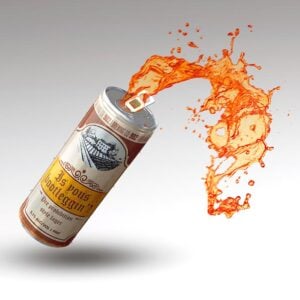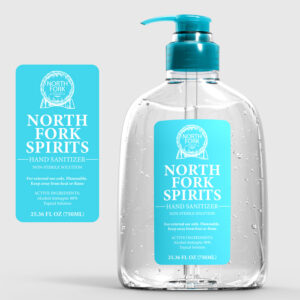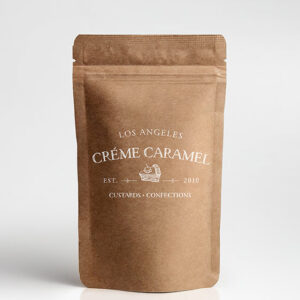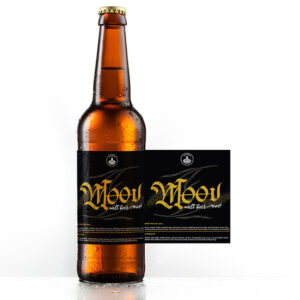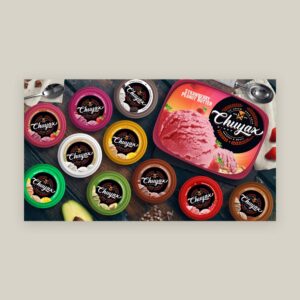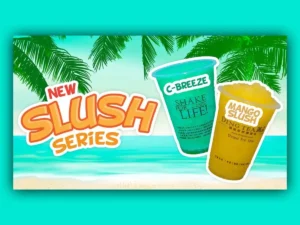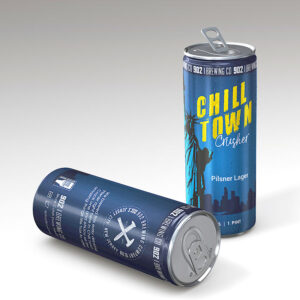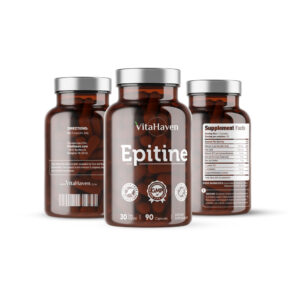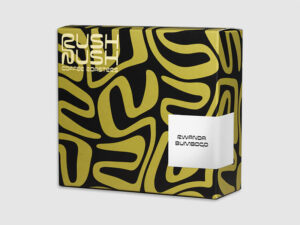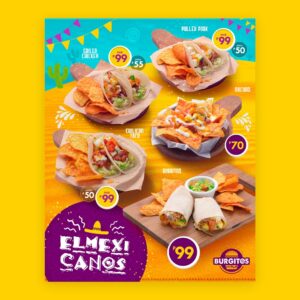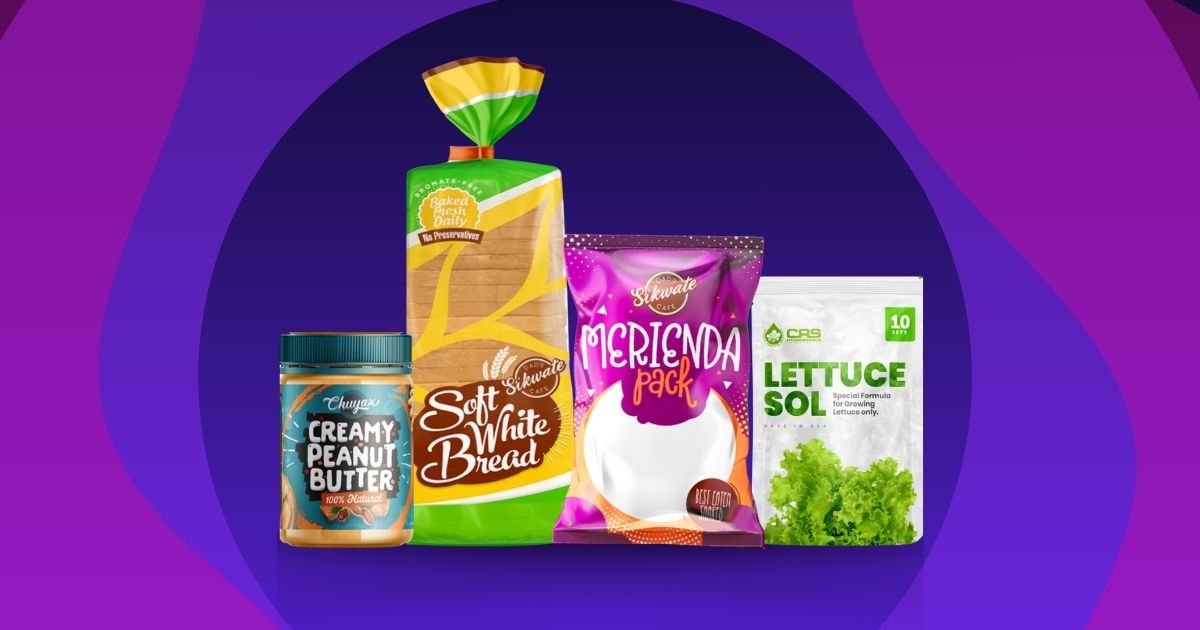
TL;DR: Package design does more than protect what’s inside the box. Great packaging catches eyes on crowded shelves, tells your brand story, and turns browsers into buyers. With seven out of ten consumers saying that packaging design influences their purchasing decisions, getting it right matters for your bottom line.
A package designer handles both the visual appeal and structural function of your product’s packaging. They consider branding, target audience, product protection, and sustainability while creating designs that work in real-world conditions. Strong packaging combines beautiful illustration and graphic design for marketing with practical considerations like printing costs and material durability.
If you’re preparing to hire a package designer, these 15 questions will help you get packaging that actually works. Each comes with real examples from Penji’s professional designers.
1. Can the design be printed on a durable material for the product’s storage conditions?
When designing packaging, think about where and how it gets stored. This beef packaging uses a natural, eco-friendly look but prints on water-resistant material that withstands moist and freezing conditions in cold storage.
2. Is the design scalable for different sizes without losing quality?
Your packaging might need to work across multiple formats. This coffee enhancer brochure features detailed graphics that remain sharp and legible whether shrunk for business cards or expanded for posters.
3. Does the label design stand out on the shelf?
Wine labels face tough competition. Request shelf simulation mockups showing your packaging next to competitors to see if your design truly stands out.
4. Does the design highlight the product’s key benefits?
This electrolyte drink packaging uses vibrant colors, but the crucial benefits like hydration and energy jump out immediately. Customers won’t study your package, they’ll grab whatever communicates value fastest.
5. Does the design communicate the product’s key features?
This vintage candle packaging offers a nostalgic feel that perfectly matches a product evoking warmth. Visual style communicates as much as words about your product’s character.
6. Does the design communicate both flavor and product content?
This cookie packaging uses playful visuals but ensures key details like THC + CBD content and serving size remain easily noticeable. In regulated industries, information clarity isn’t optional.
7. Does the design express the product’s origin and traditional use?
This kava root packaging highlights Papua New Guinea origin while keeping practical information like preparation instructions clear and accessible.
8. Does the design create an engaging and memorable experience?
This Universoul Circus cup brings vibrant energy that makes people smile and remember the brand. Great packaging creates emotional connections beyond displaying information.
9. Does the design balance bold visuals with clear product information?
This is one of many examples of packaging design with striking tropical visuals that maintain regulatory compliance without sacrificing visual impact.
10. Does the design emphasize the product’s natural ingredients while maintaining an appealing look?
This custom packaging design uses bold typography and vibrant colors while expressing 100% natural ingredients without tired earth-tone clichés.
11. Does the design communicate the freshness of the product?
This bread packaging emphasizes “Baked Fresh Daily” while keeping sections clear so customers see actual product freshness. Showing beats telling.
12. Does the design differentiate between the formulas for various variants?
Strong package design services create clear distinction between products while maintaining cohesive brand identity across variants.
13. Does the design create a sense of fun while expressing brand vision?
Fun visuals attract attention but need to support rather than distract from your brand message and product understanding.
Want Product Packaging Designs That Make a Mark?
Penji’s package designer experts create packaging design services that grab attention and drive sales. Working with design as a service means unlimited revisions at a flat monthly rate. View a demo to see how unlimited graphic design works for product packaging.
Ready to create packaging that sells? Get started with Penji and work with package designer professionals who bring products to life.
Frequently Asked Questions
What’s the difference between a package designer and a graphic designer?
A package designer specializes in both visual and structural aspects of product packaging, including materials, printing methods, and production constraints. Graphic designers focus on visual communication but may lack technical packaging knowledge.
How much does it cost to hire a package designer?
Freelance package designers charge $75-$200 per hour or $1,500-$10,000+ per project. Unlimited graphic design services like Penji start at $499 monthly with unlimited revisions.
How long does package design typically take?
Simple designs take 1-2 weeks. Complex projects take 4-8 weeks depending on revisions and prototyping needs. Design support for marketing teams can accelerate timelines.
Do I need a package designer or can I use templates?
Custom package design creates differentiation that drives sales. If your product faces shelf competition or represents a premium brand, invest in a professional package designer.
What file formats should I receive from my package designer?
You should receive print-ready PDFs, AI files, and EPS with proper bleeds and color specifications, plus editable source files, dieline templates, and 3D mockups for marketing use.
About the author

Carla Deña
Carla is a journalist and content writer who produces stories for both digital and legacy media. She is passionate about creativity, innovation, and helping small businesses explore solutions that drive growth and social impact.
Table of Contents
- 1. Can the design be printed on a durable material for the product’s storage conditions?
- 2. Is the design scalable for different sizes without losing quality?
- 3. Does the label design stand out on the shelf?
- 4. Does the design highlight the product’s key benefits?
- 5. Does the design communicate the product’s key features?
- 6. Does the design communicate both flavor and product content?
- 7. Does the design express the product’s origin and traditional use?
- 8. Does the design create an engaging and memorable experience?
- 9. Does the design balance bold visuals with clear product information?
- 10. Does the design emphasize the product’s natural ingredients while maintaining an appealing look?
- 11. Does the design communicate the freshness of the product?
- 12. Does the design differentiate between the formulas for various variants?
- 13. Does the design create a sense of fun while expressing brand vision?
- Frequently Asked Questions

